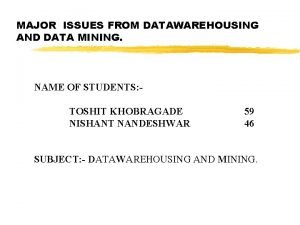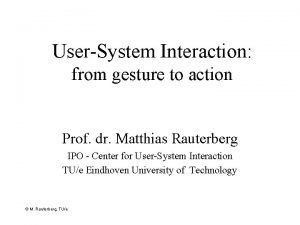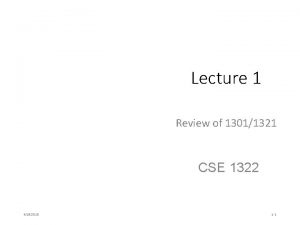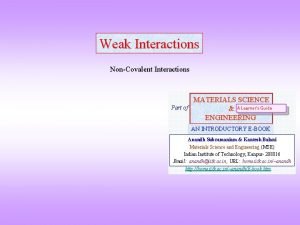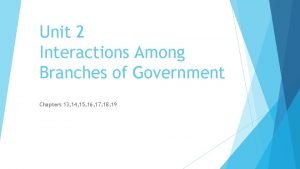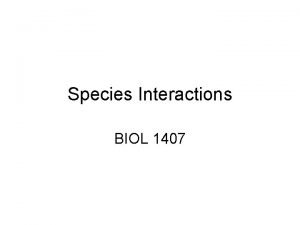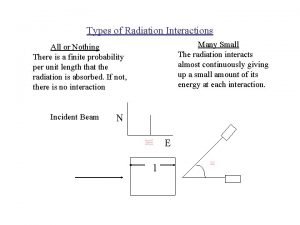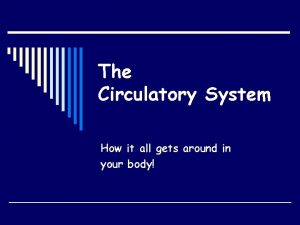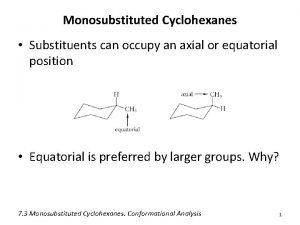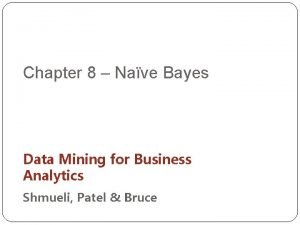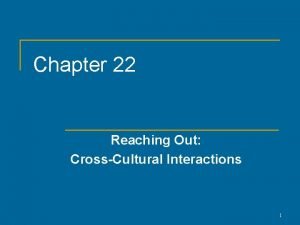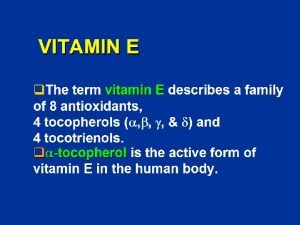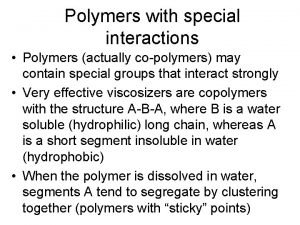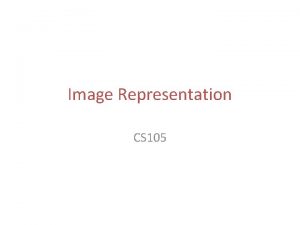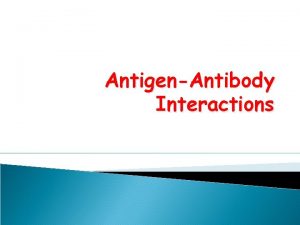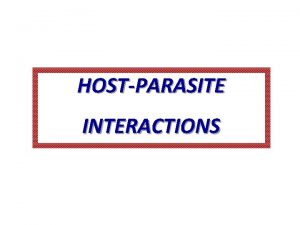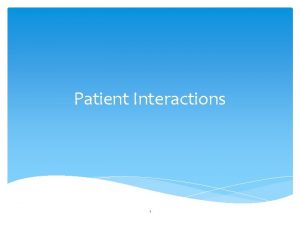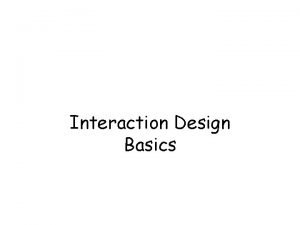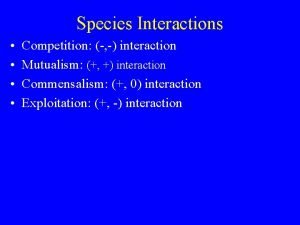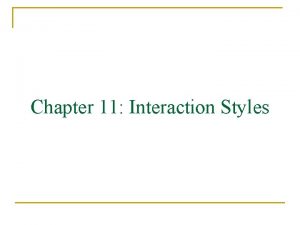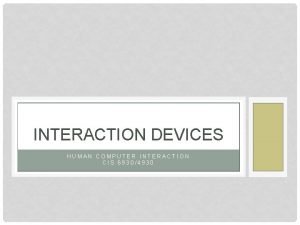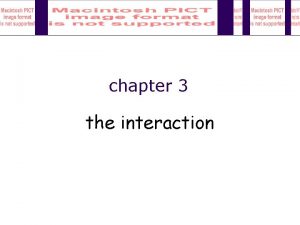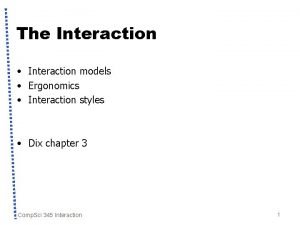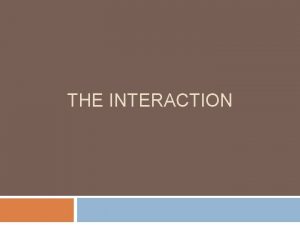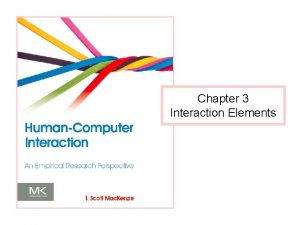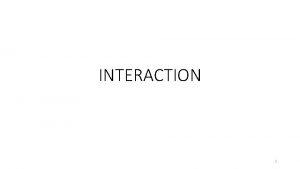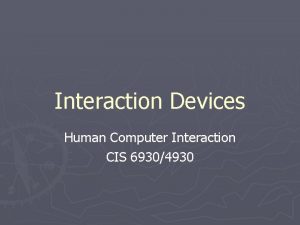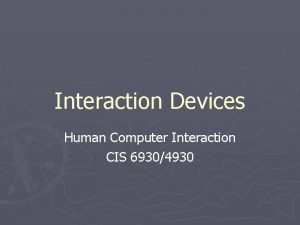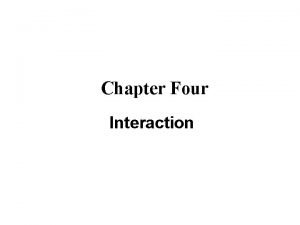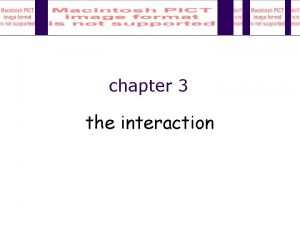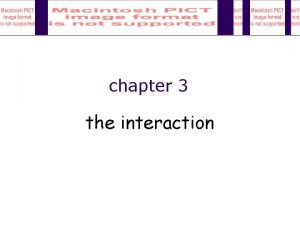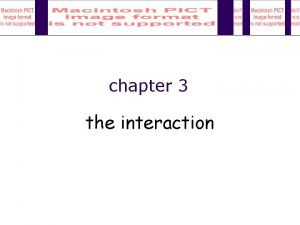User Interaction Design Representing User Interactions Design Representation










![UAN: Selecting A File 1. ~[file icon] 2. Mv^ UAN: Selecting A File 1. ~[file icon] 2. Mv^](https://slidetodoc.com/presentation_image_h/8b989caa3836a816f7d5bd6187bd73ae/image-11.jpg)




























- Slides: 39

User Interaction Design Representing User Interactions

Design & Representation • Design – Creative, mental, problem-solving process • Representation – Physical process of capturing or recording a design

Design Representations • Means by which interaction designs are communicated and documented. • Design representations are communicated between: – Designer and developer (maybe others) – Not the User (in most cases)

Design Representations • Constructional Representations – Interactions described from the system’s view point. • State Transition diagrams • Event-based mechanisms • Object Oriented mechanisms

Design Representations • Behavioral Representations – User Centered and Task/Goal Oriented. – Task Analysis, user modeling, function analysis are all behavioral activities – Example Methods • • • Command Language Grammar Keystroke Level Model Task Action Grammar GOMS (Goals, Operators, Methods & Selection) User Action Notation (UAN)

User Interaction Design • Each Behavioral design must be translated into a Constructional Design – Result is the User Interaction Design • User Interaction Design is created by the designer and given to the developer.

User Action Notation • User and Task Oriented Notation that describes physical behavior of the user and interface as task are being performed.

User Action Notation • Interfaces are represented as quasihierarchical structures of asynchronous tasks. • User actions cause state changes in the interface.

User Action Notation • UAN consists of – – Task Descriptions Scenarios Discussion Notes State Transition Diagrams • Uses special Notation to describe tasks

UAN: Selecting A File 1. Move the cursor to the file icon. 2. Press and immediately release the left mouse button.
![UAN Selecting A File 1 file icon 2 Mv UAN: Selecting A File 1. ~[file icon] 2. Mv^](https://slidetodoc.com/presentation_image_h/8b989caa3836a816f7d5bd6187bd73ae/image-11.jpg)
UAN: Selecting A File 1. ~[file icon] 2. Mv^

User Action Notation Advantage of UAN 1. Takes less space on paper. 2. If you know, it saves time.

User Action Notation Problems with UAN 1. 2. 3. 4. New language for the developer. Cryptic notation. If you don’t know it, it takes more time. No standard notation.

User Action Notation Modified • UAN consists of – – Task Descriptions Scenarios Discussion Notes State Transition Diagrams • Eliminate special Notation

Task Descriptions • Identify all of the tasks the system or product must support. • Occurs in Feasibility and Analysis Stage of Software Development.

Scenarios • Create User Scenarios that support each task from the Task Descriptions. • Occurs in Analysis and Design Stage of Software Development.

Discussion Notes • Any special observations, requirements or hypothesis that designer has are noted. • Occurs in everywhere in Software Development.

State Transition Diagrams • Finite State Machines – Graph of the system that identifies user interactions. • Occurs in Design before Development. • Includes graphs and screen images.

State Transition Diagrams • Graphs with Nodes and Edges. • Nodes – Represent interface states. – Image of interface should be included. • Edges – Appear between nodes. – Represent changes in interface state.

State Transition Diagrams • Each interface has a State Transition Diagram. • The system is a collection of interfaces, therefore, it is also a collection of State Transition Diagrams • Can become very complex very quick.

State Transition Diagrams • Each interface has a State Transition Diagram. • The system is a collection of interfaces, therefore, it is also a collection of State Transition Diagrams • Can become very complex very quick.

User Interaction Design Example Login Interface

User Login Interface


Top path Login Password Start Submit Password Login Bottom path End

Top Path Login Start Password Submit End

User enters login name.

User enters password.

User presses submit.

Bottom Path Start Submit Password Login End

User enters password.

User enters login name.

User presses submit.

Top path Login Password Start Submit Password Login Bottom path End

Review of Computational Theory Relationship to Web Design

Automatic Door/FA Front pad Rear, Both, Neither Rear pad Front, Rear, Both Front closed open Neither Chuck Allison, UVSC, http: //uvsc. freshsources. com/html/cns_3240. html

Successful Path A successful path through a transition graph is a series of edges forming a path beginning at some start state (there may be several) and ending at a final state. Free Ride 1 - abb 2 aa 3 a abbab… abbaa… abbababba 4+ b A Lambda transition occurs when you get a free transition that was not initiated by user or system action/interaction. Move on a whim (w/o consuming input). Chuck Allison modified by Seals

Example (p. 84) b a, b a a b + bbb a a ab b bb bb bbb a Cohen Ch 6 -Chuck Allison, http: //uvsc. freshsources. com/html/cns_3240. html

User Interaction Design 1. Task Descriptions 2. Scenarios 3. Discussion Notes 4. State Transition Diagrams
 User representation
User representation Abowd and beale framework example
Abowd and beale framework example Data mining major issues
Data mining major issues User system interaction
User system interaction User interaction
User interaction Single user and multi user operating system
Single user and multi user operating system Single user and multi user operating system
Single user and multi user operating system User interface design in system analysis and design
User interface design in system analysis and design Input design
Input design Noncovalent interactions
Noncovalent interactions Interactions among branches of government
Interactions among branches of government Species interaction
Species interaction Joseph connell barnacle experiment
Joseph connell barnacle experiment To understand and interpret social interactions
To understand and interpret social interactions Sertraline interactions
Sertraline interactions Unit 5 lesson 2 fiscal and monetary policy
Unit 5 lesson 2 fiscal and monetary policy The properties and interactions of magnets
The properties and interactions of magnets Felodapine
Felodapine Interactions within ecosystems grade 7
Interactions within ecosystems grade 7 Examples of abiotic factors
Examples of abiotic factors Sphere interactions examples
Sphere interactions examples Section 20-1 review species interactions
Section 20-1 review species interactions Cellular respiration flocabulary read and respond answers
Cellular respiration flocabulary read and respond answers Niches biology
Niches biology Ppi omeprazole
Ppi omeprazole Types of interactions
Types of interactions Circulatory system interactions with other systems
Circulatory system interactions with other systems Modular product architectures
Modular product architectures Axial substituents
Axial substituents Ppi drug interactions
Ppi drug interactions The factors influencing communication
The factors influencing communication Symbiosis and species interactions keystone webquest
Symbiosis and species interactions keystone webquest Major function of digestive system
Major function of digestive system Naive bayes pays attention to complex interactions and
Naive bayes pays attention to complex interactions and Chapter 22 reaching out cross-cultural interactions
Chapter 22 reaching out cross-cultural interactions Vitamin e main function
Vitamin e main function Modular product architecture example
Modular product architecture example Special interactions
Special interactions Cholinomimetic
Cholinomimetic Chapter 22 reaching out cross-cultural interactions
Chapter 22 reaching out cross-cultural interactions


